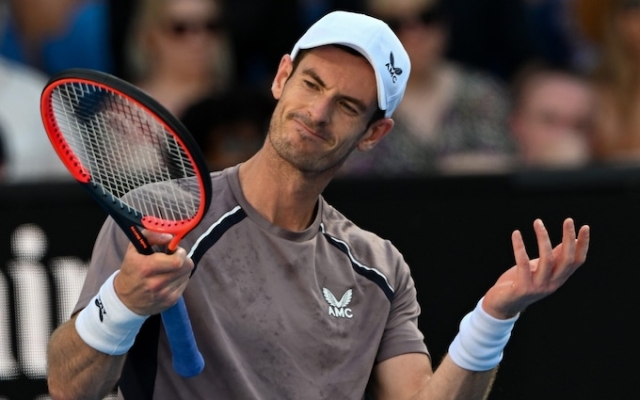 Andy Murray is likely to end his career at the Paris Olympics this year, five years after what was described as his first «retirement» from tennis Photo: Will Murray/Getty Images
Andy Murray is likely to end his career at the Paris Olympics this year, five years after what was described as his first «retirement» from tennis Photo: Will Murray/Getty Images
Athletes die twice, the saying goes. Once at the end of their lives and once when they retire from competition. But for Andy Murray, who never takes the easy route, that saying could be raised to «three times.»
Athletically, Murray has already made one impossible comeback. It's been just over five years since he broke down in tears at the Australian Open, earning a retirement video dotted with warm tributes. Now the curtain is coming in for a second time, likely at the Paris Olympics in July.
We always knew that Murray 2.0 would not live up to the original model. Like Spitting Image, which attempted a reboot around the same time, it was destined to never regain its former relevance.
Still, there were exciting moments. After receiving a metal thigh in early 2019, Murray miraculously captured the ATP title in Antwerp just nine months later.
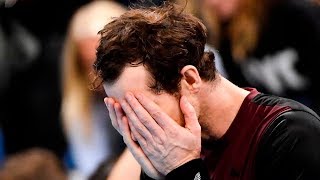
Or think about the first weeks of 2023, a torrid period during which he constantly ran away from the most unpromising things of the position. In the press room, we reporters were grateful for a few upbeat stories in a rather dismal start to the new tennis season.
Lately, however, Murray has been staggering around the court like a man in a weighted jacket. Now his career is a zombie career, a narrative of life support as he fights for his farewell appearances at Wimbledon and the Olympics.
Murray is probably as surprised as anyone by his rapid decline. In 2023, he scored three top 20 finishes and reached the ATP Finals in Doha, finishing the season at a respectable 42nd place in the rankings. However, based on the results of this year, he will go beyond the top 150 best players in the world.
<р>Like Ernest Hemingway's bankruptcy, Murray's decline occurred in two ways: gradually and then suddenly. Former tennis player Andea Petkovic put it well last week when she wrote that the gradient of decline among female tennis players is small and is mitigated by nutritional supplements and medical sleight of hand. “But one day you wake up, and it overtakes you with a roar.”
If there was a dividing line for Murray, it could probably be traced back to September's match in Beijing, where he squandered a 5-2 lead in the deciding set against Alex de Minaur. This had a huge impact on his confidence and sent a nasty message to the locker room: There is no position when playing Murray that you cannot return from.
 Murray tried to appear a calmer figure on court during his comeback but his frustration grew after a painful defeat to Alex de Minaur in Beijing in September. Photo: Pedro Parro/AFP via Getty Images
Murray tried to appear a calmer figure on court during his comeback but his frustration grew after a painful defeat to Alex de Minaur in Beijing in September. Photo: Pedro Parro/AFP via Getty Images
It's not like Murray is Robinson Crusoe here. Bottle loss is a common symptom among aging athletes. Even the «greatest contender of all time» like Serena Williams lost her lead in the final after returning from maternity leave.
What makes Murray even more extraordinary is his determination to keep going despite his physical limitations, which will always be a limiting factor. The closest analogy is Lleyton Hewitt, the 2002 Wimbledon champion, who continued to play singles for more than four years after having his big toe immobilized with a metal plate. “There's been talk about retirement since I was 26,” Hewitt said shortly before surgery. “This is complete nonsense.”
Murray also did not like being questioned about his plans. Last month he reacted angrily to a BBC reporter who questioned whether his recent difficulties had tarnished his legacy. As he explained: «I just don't accept that by performing now I'm in any way affecting what I achieved when I was fit and healthy and had two hips.»
It was a convincing argument. Does anyone think less of Money or The Rachel Papers because Martin Amis's later novels became critical punching bags? The answer should be no. And yet one can't help but wonder if Murray would have done it all again if he had known his post-surgery self would never make it past the third round of a major.
This record at Grand Slams — and especially at Wimbledon — is by far the most significant entry in the debit column. Murray's 1.0 Grand Slam win ratio was four and a quarter wins for every loss, meaning his average was slightly better than the quarterfinals. But for Murray 2.0, every major appearance is a coin toss, with only 11 wins out of 22 attempts. Par is now in the second round.
In that context, you can understand why Murray was so devastated by Stefanos Tsitsipas' departure from center court last summer. This time the draw seemed to have opened up for him, with clay amateur Laszlo Djere playing the winner and first-timer Christopher Eubanks waiting in the last 16.
However, events conspired against him, as they often do when you're desperate for a break. Wimbledon's 11pm curfew saved a grumpy Tsitsipas' misfire when he trailed two sets to one on Thursday night. Then, in Friday's decider, a poor line call denied Murray his best chance to break serve. Even then, it felt like Murray missed his big moment.
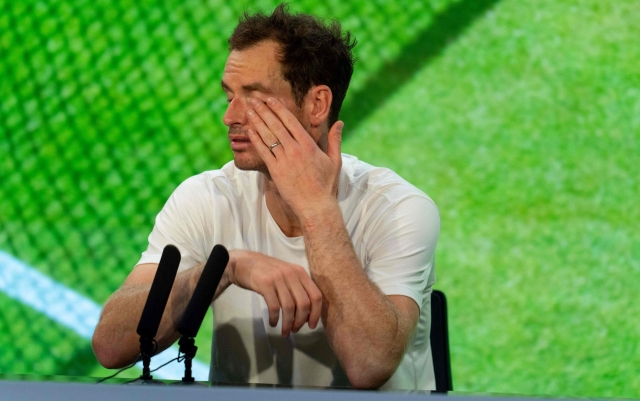 Murray gets emotional after losing to Stefanos Tsitsipas at last year's Wimbledon. just when it looked like the draw was opening for him. Photo: Joe Toth/AFP
Murray gets emotional after losing to Stefanos Tsitsipas at last year's Wimbledon. just when it looked like the draw was opening for him. Photo: Joe Toth/AFP
Much of this saga is dedicated to the search for a beautiful ending. As Murray told the makers of the documentary Resurfacing in 2019, he felt he «deserved a better result» than the sudden shutdown in 2017 (French Open semi-finals today, scrap tomorrow). . For most athletes, the fairytale ending is like the end of the rainbow: it keeps getting further and further away.
Another of Murray's motivations is that he hates being told he can't do something and draws strength from his story of proving people wrong. Fueled by some dark corner of his soul, he loves wrestling so much that his favorite word at press conferences is “tough.”
Some observers find this aspect of his career compelling: the story of a gifted mortal who fought the gods tennis, like some kind of tennis Hercules, and from time to time won victories through sheer stubbornness. Others — a growing number if social media is any indication — are outraged that he couldn't pave the way to victories with the brilliance of Roger Federer.
One of Murray's aspirations for his return was to be more dignified on the court. He wanted to swap the vinegar for something sweeter, look at Federer and say, “I’ll take what he has.” And he managed to cut back on the noise and fury for a few months during his second honeymoon before winning the title in Antwerp in October 2019.
However, even then Murray had enough self-confidence. realization to wonder how long his new leaf will last. “Everything I do in tennis now brings me much more pleasure,” he told Telegraph Sport during the tournament. «But maybe when I get back to playing Grand Slams I'll start putting more pressure on myself.»
Pressure. This is at the heart of Murray's story. First there was external pressure to end the 77-year wait for a homegrown Wimbledon champion. There is now a voluntary pressure to move beyond biology. Murray seems to be addicted to this stuff.
Without pressure there is no adrenaline. And that's why I suspect that even if he knew he would never regain his Wimbledon seeding, Murray would still have signed up for that second coming. As he said in his response to the BBC article: “Most people in my situation would quit and give up right now. But I'm not like most people, and my mind works differently.”
Among all the chatter, it's easy to forget that the highest position at number 37 remains a remarkable achievement for a man with a bionic hip. Murray will no doubt cite this as reason enough for his quest and will look back on his return to Planet Tennis as a precious second chance, a reprieve from his own sporting mortality. Even if at the same time it was an unpleasant experience on all sides.


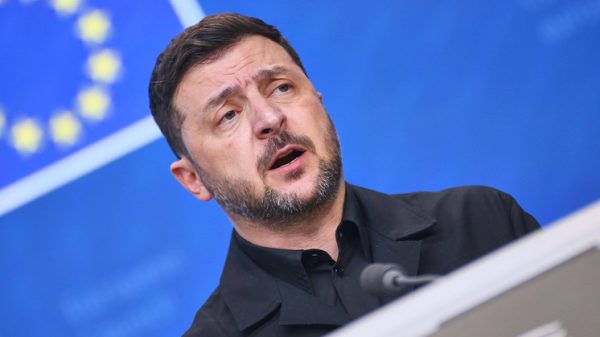












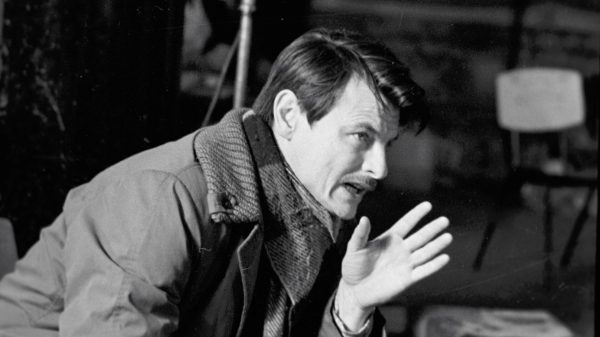






































Свежие комментарии